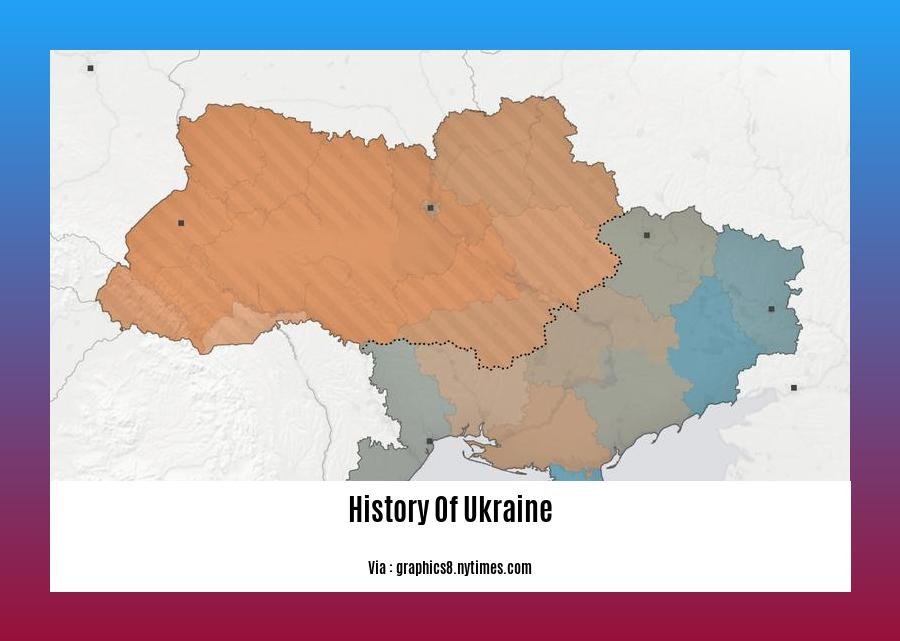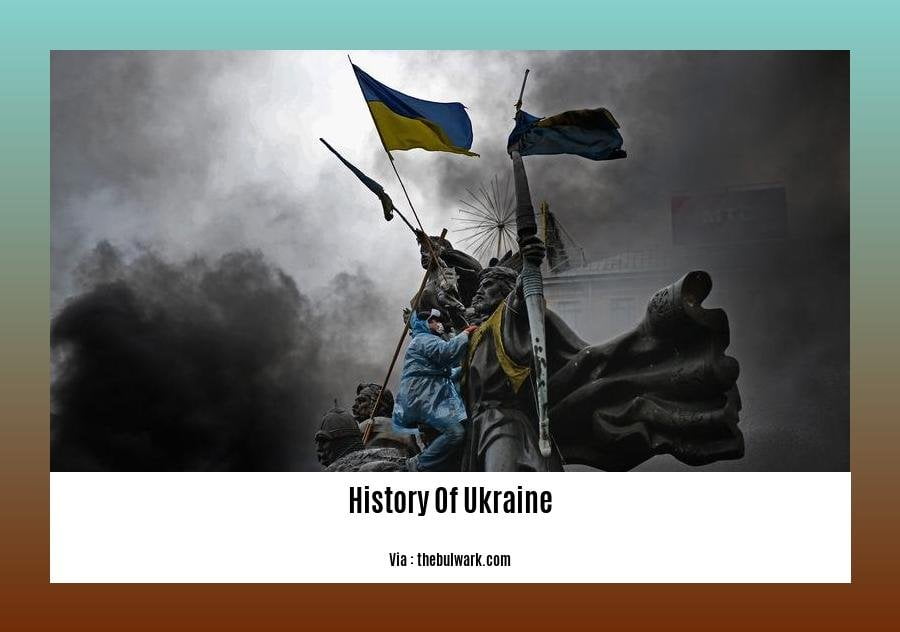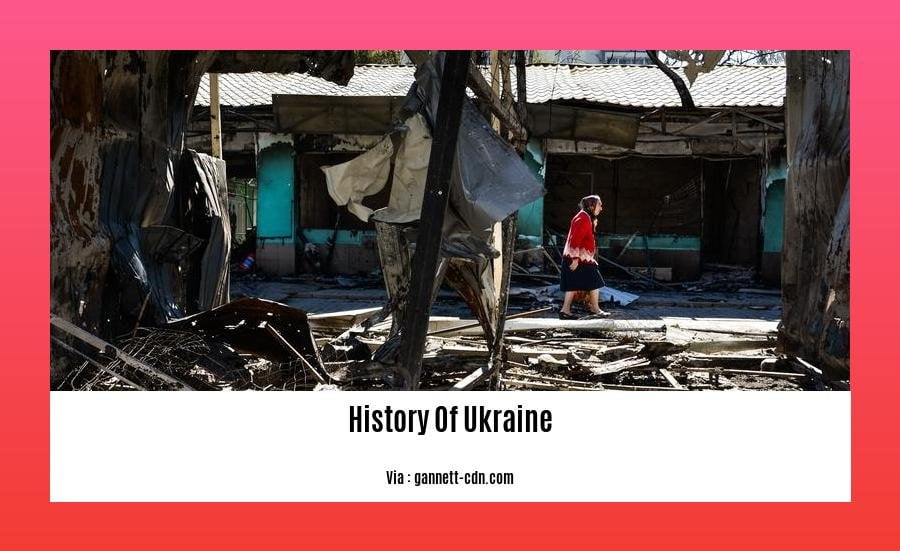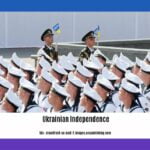Embark on [A Comprehensive Journey Through the History of Ukraine], an exploration of the nation’s rich past. From its ancient origins to the challenges of modern times, this article delves into the political, social, and cultural forces that have shaped this fascinating nation.
Key Takeaways:
- Stone tools discovered in Ukraine suggest human presence in Europe as early as 1.4 million years ago.
- The Cucuteni-Trypillian Culture thrived in Ukraine from 4,500–3,000 BC.
- The Scythians established a kingdom in Ukraine from 750 to 250 BC.
History of Ukraine

Before Ukraine became the nation we know today, it was home to various civilizations that left their mark on this land.
Prehistoric Ukraine
Did you know that some of the earliest hominin tools, dating back 1.4 million years, were found in Ukraine? This suggests that Ukraine might have been one of the first places in Europe where humans lived. Later, the Cucuteni-Trypillian Culture flourished, leaving behind impressive settlements.
Antiquity
Fast forward to the Iron Age, and we encounter the Scythians, a nomadic people who established a powerful kingdom in Ukraine. They were skilled warriors and left behind elaborate artwork that we can still admire today.
Medieval Ukraine
In the Middle Ages, Ukraine fell under the influence of various empires, including the Kievan Rus’, the Mongols, and the Polish-Lithuanian Commonwealth. During this time, Christianity spread, and cities like Kyiv grew in prominence.
Cossack Era
The 16th and 17th centuries saw the rise of the Cossacks, a semi-autonomous group of warriors who played a significant role in Ukrainian history. They fought for their independence against various powers, leaving a lasting legacy of bravery and determination.
Modern Ukraine
The 20th century was a tumultuous time for Ukraine. It gained independence after the Russian Revolution, only to be incorporated into the Soviet Union. After the Soviet collapse, Ukraine emerged as an independent nation, facing challenges and opportunities as it navigated the post-Soviet era.
Conclusion
As you can see, the history of Ukraine is a rich and captivating tapestry woven from ancient origins, medieval empires, and modern struggles. It’s a story of resilience, cultural diversity, and the indomitable spirit of a nation.
Uncover the intriguing history of Kievan Rus, the powerful medieval state that laid the foundation for modern Ukraine. Delve into the era of the Cossack Hetmanate, a period of autonomy and military prowess that shaped the nation’s identity. Finally, witness the triumphant journey of Ukrainian independence, a testament to the resilience and determination of the Ukrainian people.
Early Modern Period

Key Takeaways:
- Ukraine played a crucial role in spreading Chalcolithic and Bronze Age cultures across Eurasia.
- The Union of Lublin in 1569 brought Ukraine into the Polish-Lithuanian Commonwealth.
- Ukrainian territories were divided among four powers in the 14th and 15th centuries.
- The Polish-Lithuanian Commonwealth and Ottoman Empire emerged as regional powers.
The early modern period in Ukraine witnessed significant developments that shaped its future. The region was caught in the crosshairs of powerful empires, including the Polish-Lithuanian Commonwealth and the Ottoman Empire, and experienced both cultural enrichment and political turmoil.
Ukrainian Cossacks: The rise of Cossack communities in the 16th century marked a period of relative autonomy for Ukraine. Cossacks, known for their military prowess and unique culture, played a vital role in the region’s defense and politics.
Union of Lublin: In 1569, the Union of Lublin brought Ukraine into the Polish-Lithuanian Commonwealth, creating a vast and influential state. However, this union also led to tensions between the Ukrainian Orthodox Church and the Catholic Church.
Khmelnytsky Uprising: The Khmelnytsky Uprising in the 17th century was a major rebellion against Polish rule led by Bohdan Khmelnytsky. While initially successful, the uprising ultimately resulted in Ukraine being divided between Poland and Russia.
Partition of Ukraine: In the 18th century, Ukraine was partitioned among Austria-Hungary, Poland, and Russia, marking a period of foreign domination and cultural suppression for the Ukrainian people.
Ukraine’s early modern period was a time of great change, both positive and negative. The region’s rich history and complex cultural heritage can be traced back to this era, shaping its identity and place in the world today.
Sources:
– History of Ukraine – Wikipedia
– Ukraine – History
Modern History
Ukraine’s modern history can be traced back to the late 18th century when it emerged as a nation during the Ukrainian National Revival. Throughout the 19th and 20th centuries, Ukraine faced political turmoil, including the First World War, revolutions, and the aftermath of the Ribbentrop-Molotov pact.
Key Takeaways:
- Ukraine’s modern history saw the rise of Ukrainian nationalism and the struggle for independence.
- The First World War, revolutions, and the Ribbentrop-Molotov pact significantly shaped Ukraine’s modern history.
- Ukraine has experienced a complex journey towards nationhood and self-determination.
Relevant URLs:
- Wikipedia: Modern History of Ukraine
- TakeLessons: Online History Tutoring
FAQ
Q1: When did Ukraine’s history begin?
A1: Ukraine’s history dates back to the 1.4 million-year-old stone tools discovered in the country, indicating the earliest known hominin presence in Europe.
Q2: What were some of the major civilizations that existed in Ukraine during ancient times?
A2: The Cucuteni-Trypillian Culture flourished in Ukraine from 4,500–3,000 BC, and the Scythian kingdom existed in the region from 750 to 250 BC.
Q3: How did Ukraine become part of the Polish-Lithuanian Commonwealth?
A3: Ukraine became part of the Polish-Lithuanian Commonwealth after the Union of Lublin in 1569.
Q4: What were some of the significant events that occurred in Ukraine during the modern era?
A4: Ukraine experienced significant events during the First World War, the revolutions, and aftermath, including the Ribbentrop-Molotov pact that divided Poland and impacted the Ukrainian population in Galicia.
Q5: When did Ukraine emerge as a nation?
A5: Ukraine emerged as a nation in the late 18th and early 19th centuries during the Ukrainian National Revival.
- China II Review: Delicious Food & Speedy Service - April 17, 2025
- Understand Virginia’s Flag: History & Debate - April 17, 2025
- Explore Long Island’s Map: Unique Regions & Insights - April 17, 2025
















